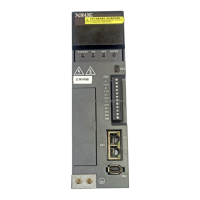5.DS5 series rigid gain adjustment
The new generation DS5 series servo has rigid adaptive, self-tuning and manual adjustment modes, without
complicated parameter adjustment process, which greatly saves the gain adjustment time. (refer to the chapter
of servo gain adjustment in the user manual for details)
Mode Type
Parameter
s
Rigidity Responsiveness Related parameters
Adaptive
Automatic
adaptation
P2-01.0=1 middle 150ms
P2-05 adaptive speed loop gain
P2-10 adaptive speed loop integral
P2-11 adaptive position loop gain
P2-07 adaptive inertia ratio
P2-08 adaptive speed observer
gain
P2-12 adaptive stable max inertia
ratio
Self-tuning
Fast
adjusting
P2-01.0=0
high 10~50ms
P0-07 first inertia ratio
P1-00 speed loop gain
P1-01 speed loop integral
P1-02 position loop gain
P2-35 Torque instruction filtering
time constant 1
P2-49 Model loop gain
Automatic
adjustment
high 10ms
Manual
adjusting
high
Determined by
parameters
Adaptive function: adaptive function refers to the function that can obtain stable response through automatic
adjustment regardless of the type of machinery and load fluctuation.
Quick adjustment function: the quick adjustment needs to estimate the moment of inertia of the load before
turning off the adaptive function. If the inertia does not match, it will cause oscillation alarm. The rapidly
adjusted gain parameters belong to the self-tuning mode.
Automatic adjustment function: automatic adjustment refers to the function that the servo unit automatically
adjusts according to the mechanical characteristics when performing automatic operation (forward and reverse
reciprocating motion) within the set range or receiving the operation command of the upper device. Automatic
adjustment is divided into internal command self-tuning and external command self-tuning.
Automatic adjustment (internal command self-tuning) refers to the function that the servo unit performs
automatic operation (forward and reverse reciprocating motion) without sending commands from the upper
device, and adjusts according to the mechanical characteristics during operation.
55

